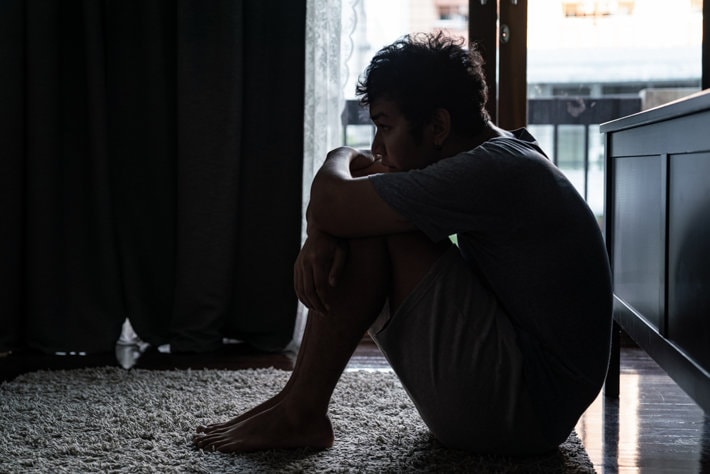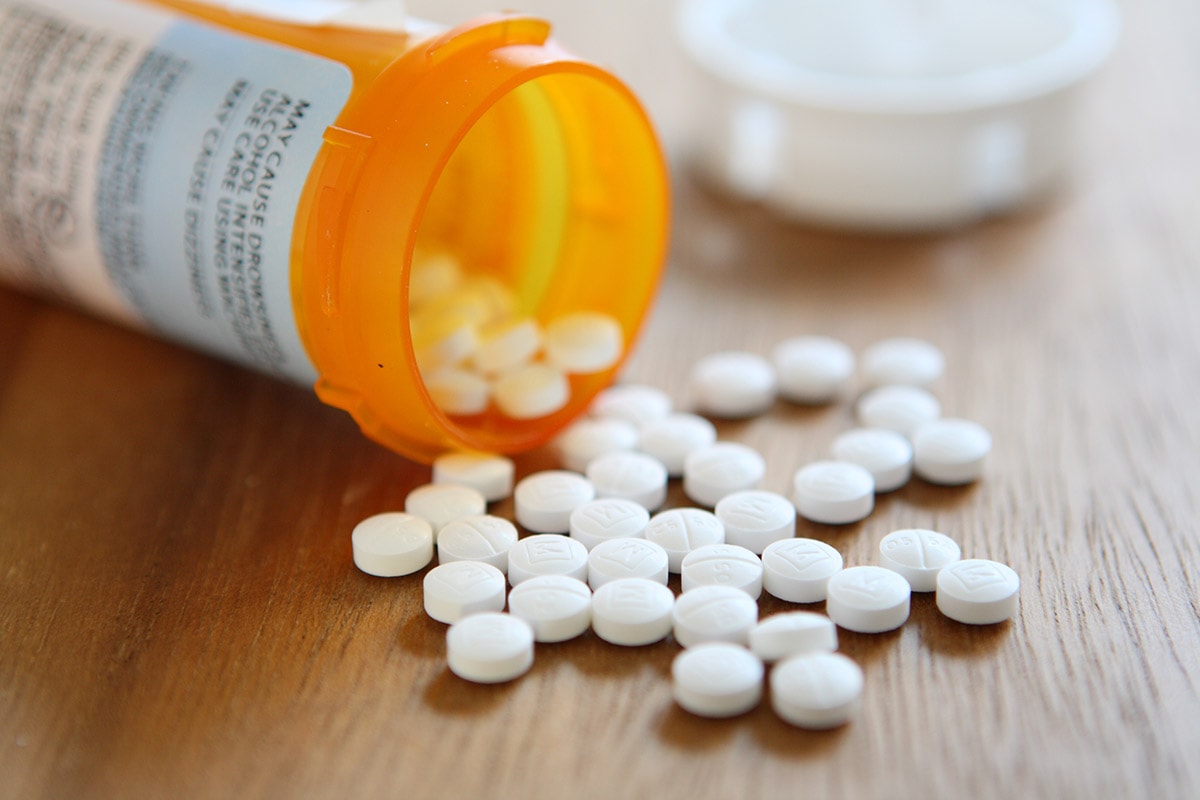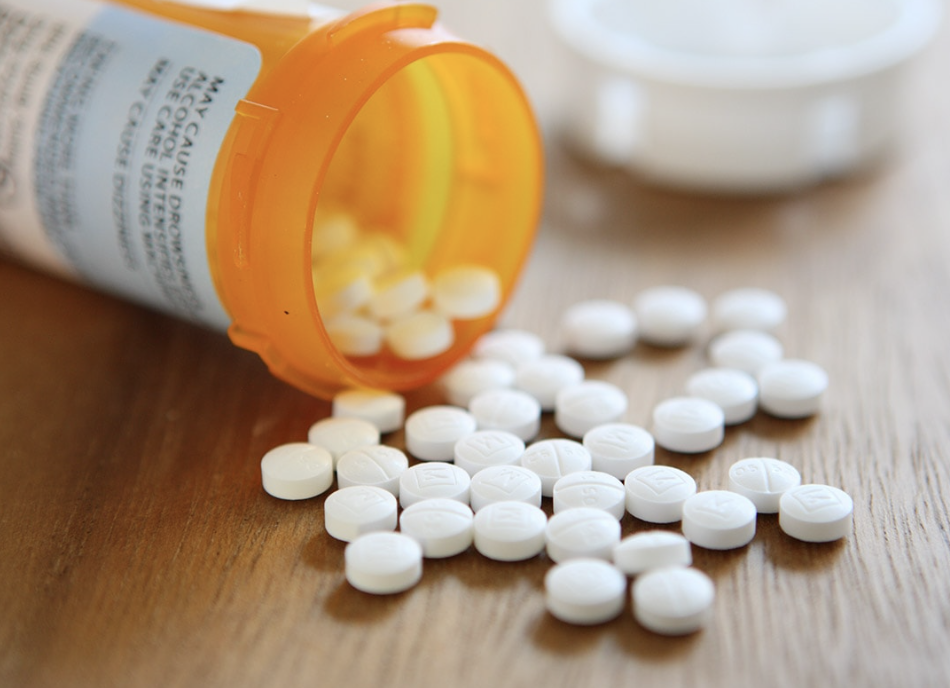Vicodin addiction is the compulsive use of the painkiller despite its negative effects. In this article, we explain the symptoms, risks, and ways to recover from Vicodin addiction.
Key Takeaways
- Vicodin addiction involves a compulsive need to use the drug despite negative effects and is a significant public health concern, impacting millions.
- Symptoms of Vicodin addiction include physical signs such as drowsiness and nausea, as well as behavioral signs like mood swings and secretive behavior.
- Effective treatment for Vicodin addiction often requires a combination of medical care, counseling, and support, with options such as Medication-Assisted Treatment and inpatient rehabilitation.
Vicodin addiction: What it is and why it matters
Vicodin, a prescription painkiller combining hydrocodone and acetaminophen, is closely related to hydrocodone addiction, as both share the same active opioid ingredient. However, its potent combination makes it highly addictive, leading many to develop an addiction rapidly, sometimes resulting in multiple vicodin prescriptions. Vicodin addiction is more than just frequent use; it involves a compulsive need to consume the drug despite negative consequences. This addiction is a major contributor to the broader issue of painkiller addiction, affecting over 10 million Americans in 2022 alone.
The allure of Vicodin lies in its ability to create feelings of relaxation and well-being, which can lead to pleasant effects. Unfortunately, this often encourages misuse, leading individuals to take more vicodin, higher doses, or use the drug recreationally.
The consequences of such abusing vicodin are severe, affecting one’s daily life, relationships, and overall health. Recognizing Vicodin addiction early aids in timely intervention, preventing its devastating effects.

How do I know if I’m addicted to Vicodin?
Recognizing Vicodin addiction involves looking for a range of symptoms, both physical and behavioral. Vicodin addiction causes both physical dependence and psychological craving.
Being aware of these symptoms signs allows for prompt help-seeking.
Physical signs of Vicodin addiction
Physical signs of Vicodin addiction include drowsiness, constipation, nausea, and slowed breathing. Users may also experience constricted pupils, insomnia, and psychomotor retardation.
Withdrawal symptoms, such as muscle pain, anxiety, and vomiting, are also common when the drug is not taken.
Behavioral and psychological signs
Behavioral and psychological signs of Vicodin addiction include:
- Mood swings
- Engaging in risky behaviors like driving under the influence
- Frequent absences from work or school
- Exhibiting secrecy
- Using Vicodin beyond prescribed limits
- Showing a lack of interest in previously enjoyed activities
- Behavioral symptoms
Vicodin dependence vs. addiction: What’s the difference?
Differentiating between dependence and addiction is important. Vicodin dependence is characterized by a physiological need for the drug, where the body functions normally only in its presence. This often leads to tolerance and withdrawal symptoms when the drug is not taken. For instance, a person using Vicodin as prescribed for chronic pain may develop dependence without being addicted, unlike those struggling with Lortab addiction, which involves misuse of another hydrocodone-based medication.
Addiction involves:
- Compulsive drug-seeking behavior despite harmful consequences
- A persistent pattern of misuse that disrupts daily life and relationships
- A loss of control over Vicodin use
- Often taking higher doses of street drugs to achieve the same effect, which can lead to drug abuse, alcohol abuse, and substance use disorder, obtained compulsive.
While dependence can occur without addiction, addiction always involves dependence and a loss of control over drug use.
What causes Vicodin addiction?
Vicodin addiction can develop from therapeutic use, misuse, or recreational use. Risk factors include genetic predisposition, chronic pain, and co-occurring mental health disorders, leading to obtaining vicodin suffering, vicodin use disorder, and vicodin abuse.
Knowing these causes aids in preventing and addressing Vicodin addiction effectively.
Prescription misuse and prolonged use
Extended use of hydrocodone, Vicodin’s active opioid, increases the risk of addiction. Misuse includes taking higher doses than prescribed, using another person’s medication, or consuming the drug for its euphoric effects. This misuse often leads to tolerance, where larger amounts are needed to achieve the same effect.
Biological and psychological factors
Biological and psychological factors play a significant role in addiction vulnerability. Genetic predispositions, such as a family history of substance abuse, increase the likelihood of developing Vicodin addiction.
Mental health conditions like depression and anxiety, along with personality traits such as impulsivity, also contribute to greater risk of addiction.
How dangerous is Vicodin addiction?
Vicodin addiction carries short-term and long-term health risks. Short-term risks include respiratory depression, which can be life-threatening. Long-term use can lead to liver damage due to the acetaminophen component in Vicodin, and the risk of vicodin overdose effects is ever-present. Overdose symptoms include confusion, labored breathing, and seizures, which require immediate medical attention.
Beyond physical health, Vicodin addiction can severely impair daily functioning, leading to deteriorating relationships, financial problems, and exacerbation of mental health disorders. The combination of these factors makes Vicodin addiction a perilous condition requiring timely intervention and comprehensive treatment.
What are the withdrawal symptoms of Vicodin?
Enduring Vicodin withdrawal symptoms can be challenging. Early symptoms, starting within 12 hours after the last dose, include agitation, anxiety, muscle pain, and insomnia. These symptoms intensify and peak within the first three days, with additional symptoms like abdominal cramps, diarrhea, and vomiting.
While these symptoms are generally not life-threatening, they reflect common patterns seen in opioid withdrawal, including complications like dehydration and potential lung infections from vomiting. Medical supervision can make managing the following symptoms safer and more bearable.
How is Vicodin addiction treated?
Treating Vicodin addiction often involves a combination of medical care, counseling, and support groups. Professional support addresses both the physical and psychological aspects of addiction.
Medication-Assisted Treatment (MAT)
Medication-assisted treatment (MAT) employs medications like buprenorphine (Suboxone) and methadone to manage cravings and withdrawal symptoms effectively. MAT can significantly improve treatment outcomes by reducing the discomfort associated with withdrawal and aiding in long-term recovery.

Detox and inpatient rehab
Inpatient rehabilitation provides a structured environment for recovery, including:
- Medically supervised detoxification to safely eliminate Vicodin from the body
- Continuous care and support
- Therapeutic approaches such as behavioral therapies and holistic methods
These programs typically last between 30 to 90 days.
Outpatient and telehealth programs
Outpatient programs and telehealth services offer flexibility for those with support systems. These human services programs allow individuals to continue their daily activities and improve their occupational performance while receiving treatment, often incorporating online counseling and therapy, supported by the mental health services administration.
Telehealth offers convenient access to addiction treatment and has become increasingly popular.
Therapy and counseling
Therapy and counseling are vital in treating Vicodin addiction. Cognitive Behavioral Therapy (CBT) and Dialectical Behavior Therapy (DBT) help address underlying thought patterns and behaviors related to substance use.
Group therapy sessions provide support by connecting individuals with others facing similar challenges.
How long does recovery from Vicodin addiction take?
Recovery from Vicodin addiction is a non-linear and individualized process. Withdrawal symptoms typically follow this timeline:
- Begin within 6 to 12 hours after the last dose
- Peak between days one to three
- Start to lessen around days five to seven for many
- May persist for months in long-term users
Recovery time is influenced by the length of addiction, overall health, and the presence of co-occurring mental health disorders. While the most intense withdrawal symptoms last about one to two weeks, full recovery can take several months as individuals adjust to life without the drug.
Can I recover from Vicodin addiction without rehab?
While possible, recovering from Vicodin addiction without formal rehabilitation is challenging. Self-help strategies, such as support groups and therapy, can aid individuals attempting to recover on their own. Gradually tapering off the medication under medical supervision can help manage withdrawal symptoms.
However, professional treatment outcomes are significantly higher. Medical supervision ensures a safer detox process and provides ongoing support to address both physical and psychological aspects of addiction.
How to help a loved one addicted to Vicodin
Helping a loved one with Vicodin addiction requires:
- Understanding and empathy
- Open, honest, and judgment-free communication when discussing concerns
- Encouraging professional treatment, as addiction often requires specialized help
Setting boundaries and avoiding enabling behaviors, such as making excuses for a loved one’s actions, can promote recovery. Offering emotional support and being actively involved in the treatment process can significantly aid a loved one’s recovery journey.
Prevention: How to avoid Vicodin addiction from prescribed use
Open discussions with healthcare providers about opioid prescription risks are the first step in preventing Vicodin addiction. Proper storage and disposal of prescription drugs and prescription opioids through designated drug take-back programs can prevent misuse.
Exploring non-opioid pain management alternatives and setting clear treatment goals with your doctor can reduce opioid addiction risk. Regular check-ins with your doctor after starting taking opioids can help identify early signs of opioid use and opioid use disorder and opioid abuse to treat pain and opioid misuse.

Bottom Line: Taking the next step toward recovery
Seeking help sooner can significantly improve recovery outcomes for those struggling with Vicodin addiction. Medically assisted detox offers a safer, more comfortable withdrawal experience, facilitating long-term recovery.
Ongoing treatment options like outpatient programs or continuing therapy are crucial for sustaining recovery. Involving family and support networks in recovery can provide additional motivation and accountability.
FAQs about Vicodin addiction
Is Vicodin the same as hydrocodone?
Vicodin is not the same as hydrocodone; it contains hydrocodone combined with acetaminophen, enhancing its potency and addictive potential.
Can Vicodin addiction lead to heroin use?
Vicodin addiction can lead to heroin use, as individuals may seek a more affordable and accessible alternative to prescription opioids. This transition is a significant risk for those struggling with opioid dependence.
What are the signs of Vicodin addiction?
The signs of Vicodin addiction include seeking early refills, obtaining prescriptions from multiple doctors, and using the medication beyond prescribed limits. Recognizing these behaviors is crucial for timely intervention.
How can I safely dispose of unused Vicodin?
To safely dispose of unused Vicodin, utilize designated drug take-back programs or adhere to FDA guidelines for medication disposal. This ensures both safety and environmental protection.
Can mixing Vicodin with alcohol be dangerous?
Mixing Vicodin with alcohol is indeed dangerous, as it can greatly elevate the risk of respiratory depression and overdose. It is crucial to avoid this combination to ensure your safety.
















